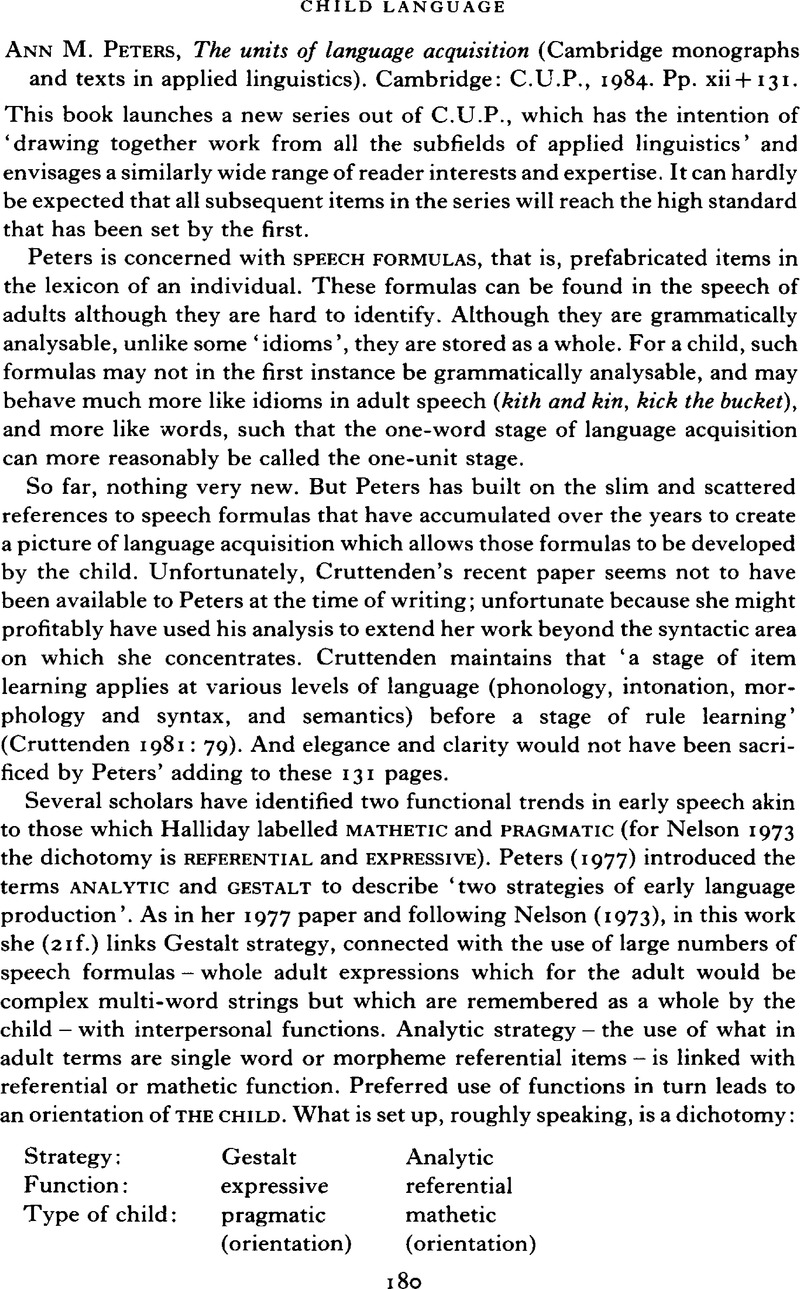No CrossRef data available.
Article contents
Ann M. Peters, The units of language acquisition (Cambridge monographs and texts in applied linguistics). Cambridge: C.U.P., 1984. Pp. xii + 131.
Review products
Ann M. Peters, The units of language acquisition (Cambridge monographs and texts in applied linguistics). Cambridge: C.U.P., 1984. Pp. xii + 131.
Published online by Cambridge University Press: 26 September 2008
Abstract
An abstract is not available for this content so a preview has been provided. Please use the Get access link above for information on how to access this content.

Information
- Type
- Reviews
- Information
- Copyright
- Copyright © Cambridge University Press 1986
References
REFERENCES
Burling, R. (1959). Language development of a Garo and English-speaking child. Word 15. 45–68. Reprinted in E. M. Hatch (ed.) (1978), Second language acquisition. Rowley, MA: Newbury House.CrossRefGoogle Scholar
Leopold, W. (1953). Patterning in children's language learning. Language Learning 5. 1–14. Reprinted in A. Bar-Adon and W. F. Leopold (eds) (1971), Child language: a book of readings. Englewood Cliffs, NJ: Prentice-Hall.CrossRefGoogle Scholar
Nelson, K. (1973). Structure and strategy in learning to talk. MonogSocResChDevel 38. No. 149.Google Scholar
Peters, A. M. (1977). Language learning strategies: does the whole equal the sum of the parts? Lg 53. 560–73.Google Scholar
Wong Fillmore, L. (1979). Individual differences in second language acquisition. In Fillmore, C. J., Kempler, D. and Wang, W. S-Y. (eds), Individual differences in language ability and language behavior. New York: Academic Press.Google Scholar

